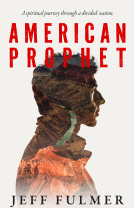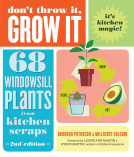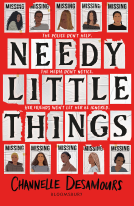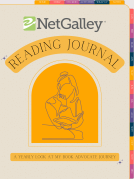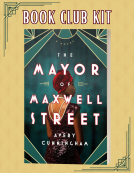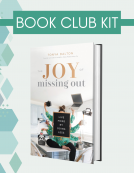
The Ultimate Guide to Preserving and Canning
Foolproof Techniques, Expert Guidance, and 110 Recipes from Traditional to Modern
by Editors of the Harvard Common Press
This title was previously available on NetGalley and is now archived.
Send NetGalley books directly to your Kindle or Kindle app
1
To read on a Kindle or Kindle app, please add kindle@netgalley.com as an approved email address to receive files in your Amazon account. Click here for step-by-step instructions.
2
Also find your Kindle email address within your Amazon account, and enter it here.
Pub Date 10 Dec 2019 | Archive Date 3 Dec 2019
Quarto Publishing Group – Harvard Common Press | Harvard Common Press
Talking about this book? Use #TheUltimateGuideToPreservingAndCanning #NetGalley. More hashtag tips!
Description
In one concise volume, you can learn—and master like a pro—all the ways to put up food in jars, from water-bath canning to pressure canning, from pickling to jam-making, and beyond!
Whether you are a gardener, a fan of farmers’ markets, or just someone who likes to browse the bountiful produce at the supermarket, canning and preserving are easy, fun, and affordable ways to enjoy fresh-grown foods all year long.
With clear, easy-to-follow instructions and color photographs, this book provides all the information you need to know to get started today, including:
- An overview of canning equipment
- Basic steps to canning foods safely and easily
- Recipes for preserving everything from tomatoes and jams to soups, sauces, and other hearty meals
- A special section on jam- and jelly-making using Pomona’s Pectin, which requires little to no added sugar
- Tips on how to find the freshest local produce
The recipes include lots of preparations, both savory and sweet, from blue-ribbon classics to new creations. Preserve and enjoy:
- Four variations on Tomato Ketchup
- Taco Sauce
- Green Tomato Chutney
- Spicy Dilly Beans
- Sweet and Spicy Ginger Carrot Coins
- Canned Haddock
- Chicken or Turkey Broth
- Creamy Squash Soup
- Strawberry Jam
- Blueberry-Vanilla Jelly
- Cherry-Port Preserves
- Apple-Raisin-Walnut Conserve
- And much more
This comprehensive book teaches beginners how to get started and gives seasoned veterans new techniques and recipes to try.
Available Editions
| EDITION | Other Format |
| ISBN | 9781558329850 |
| PRICE | US$27.99 (USD) |
| PAGES | 224 |
Average rating from 32 members
Featured Reviews
 Reviewer 491456
Reviewer 491456
Everything I ever wanted to know about canning in a concise and beautiful book - you honestly can't ask for more. As a canning novice, I found the book to be massively approachable. Every tool provided with explanation, every method explained, every step clear. No stone left un-turned; even the altitude is accounted for. The recipes themselves are basic and a lot of attention is given to fruits (3 chapters). I do wish more love were given to meats and veggies - this Chicagoan craves a giardiniera! I also wish that there were more cultural variety. If you're looking for kimchi, you won't find it in this book. Overall, though, it's a beautiful book that is incredibly educational. It'll easily become my go-to guide.
While it’s true that improvising and adapting recipes is often an enjoyable creative outlet for many home chefs, when it comes to canning, having an authoritative reference of recipes is essential. It’s with this in mind that the Editors of the Harvard Common Press have developed The Ultimate Guide to Preserving and Canning.
Because the pH of a canning recipe is what allows a home cook to create foods that can be stored indefinitely, the recipes must always be followed to the letter; otherwise, the result will not be shelf-stable to due to differences in pH. For this reason, a book like the Ultimate Guide to Preserving and Canning is essential for a home canner.
One thing I found challenging about this cookbook is that all of the recipes call for Pomona’s Pectin, a particular brand name of pectin that can be used in lower-sugar recipes than the traditional pectin that is used in many older recipes. Pomona’s is often more difficult to find and more expensive than your everyday pectin. It also requires another step – making calcium water, which then must be stored, since you usually have to make more calcium water than a single canning recipe calls for. Because these recipes exclusively use Pomona’s, I view this cookbook as not a universal guide but more a guide to canning in a particular style. I think many home canners would be surprised if they turned to this “ultimate guide” for a recipe and suddenly found they needed a new ingredient that they are unaccustomed to using. On the other hand, those who use Pomona’s or those who are looking specifically for lower-sugar recipes might be truly delighted to find another resource like this one.
Overall, as an experienced home canner who already owns a canning cookbook with a large variety of recipes, I did not find that this cookbook filled a gap for me. I would hesitate to recommend it to others, especially those with less experience, unless they are specifically looking for a cookbook with canning recipes that call for Pomona’s Pectin.
 Reviewer 539597
Reviewer 539597
*received from netgalley for honest review* I have never canned by myself so I cant be sure from experience if any of these things are the best way but imo this book is great! Honestly debating on just buying like 10 of these for chirstmas gifts, I know several people who would love this book!
Some new info I didn't know before about what to use for a water bath can and pressure canning. Good to know. Very easy to follow, and majority of the recipes have pictures.
I received this book at my request and have voluntarily left this unbiased review. This does not affect my opinion of the book or the content of my review.
Very informative and easy to follow directions. I feel this would make an excellent addition to those new to canning and preserving. Lots of helpful tips and information as well as a number of good recipe's to try. I most enjoyed the section on fruits and preserves since that is what I do the most especially around the holidays (makes fantastic additions to gift baskets). I received this book from NetGalley for an honest review.
 Reviewer 596926
Reviewer 596926
As a very amateur canner this book gave me all the tools I need to now do it successfully. The instructions are very clear and precise. I am excited to try the recipes included. Thank you for making one of the best books on canning and preserving on the market.
This book professes to be the "Ultimate Guide to Preserving and Canning" and it really, truly is! The information is comprehensive and outlines the entire process of canning step-by-step. The book and accompanying graphics are aesthetically pleasing and well-organized. As someone not familiar with canning, I felt like I learned a lot, but I'd imagine that experienced canners will still appreciate this book and the recipes.
Thanks to the publisher and Netgalley for providing an advance review copy.
 Media/Journalist 16509
Media/Journalist 16509
As an experienced canner (and preserver in many other methods) with many shelves of home canned produce in my basement as I type, I was rather disappointed in this book. While it does a good job of teaching a novice how to use a hot water bath canner and pressure canner, I would not consider this an ultimate guide in the least. There are some standard recipes but they use Paloma's Pectin for all jellies and jams. Not everybody wants to buy an expensive pectin product, especially when canning fruits that are already very high in pectin on their own like apples.
In the old days (I swear I'm not 90), many canning recipes just relied on you having a basic ability to understand things like cooking to a gel point and doing a test where you put a small amount of your jelly on a cold saucer to see if it sets. Nowadays people want to just add a chemical and be done, especially in the U.S, no knowledge or experience required. Okay, I get that, but does that have to be the only option? Can we really not assume that anybody at all wants a basic jelly recipe that just calls for fruit and sugar and teaches you how to do it? Is there nobody in the world but me that has apple pectin to use instead or that wants to learn how to make their own pectin from apple peels so they don't have to rely on a rather expensive product for every jelly they ever make in their lives? Sigh. Apparently. (Interestingly, they do give you an old fashioned recipe for their green tomato jam and tell you how to do the jelly test there, just not for any of the fruit jellies.)
So yes, this will teach you how to can the modern American way. I would hardly call it ultimate, but if you're a novice and this is what you're looking for, it will serve you well.
Right now on my canning shelves I have the following that I've hot water canned and pressure canned from home grown and foraged foods: roasted tomato sauce, elderflower syrup, cherry pie filling, grape juice, pears in syrup, elderberry juice, bush cherries in water, applesauce, apple juice, elderlower and rhubarb jam, elderberry jam, elderberry jelly, zesty salsa, corn, pickles, elderberry pie filling, pear sauce, elderberry lemonade concentrate, pickled beets, strawberry nectarine jam, plum sauce and mint syrup, plus a few miscellaneous others. That doesn't count dried and frozen foods, which I expected to be included in a book on preserving but were not. Of those, this book has recipes for maybe three of those. Things that I would expect to be included like even basic canned grape juice aren't in here.
(Incidentally, I didn't grow up in a canning household so it's not like it's not possible to learn this stuff on your own. I come from a long line of professional women going back to my great-grandmother and I was raised on Tuna Helper and frozen vegetables, so I had to teach myself how to cook, garden, forage and can along with my husband. Really, anybody can do this stuff!)
Also, a lot of these recipes are for people who want the fun of home canned foods that are fancy but they sort of miss the point of preserving by calling for a bunch of exotic ingredients you have to purchase so you end up paying more money to make the recipe than to buy a simple version at the store. At the core of it, canning was developed to preserve food in tasty ways and save money. This seems a little lost when you buy non-local ingredients for your frou-frou jelly recipe (okay, I really am apparently a cranky 90 year old woman at heart).
Color photos are provided, but they are often misleading. There are lots of pictures of the pretty and colorful jellies, for instance, but the pictures of veggies show the before picture of bright green beans instead of the rather un-photogenic picture of what canned green beans look like, for instance. I get this since we're a very visual culture, but it's nice to know what canned food recipes will actually look like after canning too.
While this is a fine introduction to canning, I would not call it ultimate. Any Ball blue book will have just as good of instructions and more recipes.
I read a temporary digital ARC of this book for the purpose of review.
I received a free copy of this book from Netgalley in exchange for an honest review.
I’m an experienced canner and I love this book because it goes through each step and defines canning terms so that even beginners can make all the recipes. We want the art of canning to be passed on to new generations and this book will help with that.
For those of us who are experienced canners, there is a trove of unique and interesting recipes to try that we may have never seen before. There are many unique tomato recipes I want to try, as well as chutneys, conserves, and more.
I’m excited to see instructions for canning meat, because even a lot of experienced canners do not can meat and they are missing out. It is a great feeling to be able to have fresh canned chicken ready to put in your favorite recipes, for example. There are recipes for bone broth and stock too so you can have jars readily at hand.
If you have never canned before, this book will teach you. If you have canned before, enjoy the recipes! You can also use this book as a resource when you teach others.
 Cristi M, Reviewer
Cristi M, Reviewer
Not too long ago, a good friend taught me how to can fruit preserves. It was definitely hard work but I am still enjoying the fruits of that labor a few months later which makes it well worth it. I have always been intimidated to can because I am afraid I will mess something up and get everyone sick, but after canning with my friend and seeing step by step how it works, I am ready to try more canning recipes! I love that The Ultimate Guide to Preserving & Canning gives you lots of tips at the beginning for successful canning. I also thought that many of the recipes got a modern update which is nice since I like to try new things. There are also traditional recipes which I definitely want to try as well. I thought there was a nice variety of recipes to try and I can not wait to get into my kitchen and give them a go! I recommend this book to anyone looking to start canning or someone who already has mastered the art but wants some updated recipes.
 Denice L, Reviewer
Denice L, Reviewer
Safe preserving of all types of food is a skill most people would not develop for fear of improper methods causing sickness and loss of food. I am one of the lucky persons who learned basic canning procedures when I was younger. This book has many great tips with clear guidelines for safe canning procedures, both water bath and pressure canning. The recipes included have clear step by step instructions so you know the results will be fantastic. I have always used my Ball Blue book for reference but this guide/ cookbook has earned a place of honor on by bookshelf.
 Kristin J, Reviewer
Kristin J, Reviewer
This was a really fun book. It covers the basics of canning and preserving as well as having lots of interesting recipes and a great variety in those. I'm tempted to buy a physical copy of this book, so I could try some of the recipes.
 Janet P, Reviewer
Janet P, Reviewer
This book has comprehensive instructions on basic forms of preserving, including meats which are rarely included in cookbooks, and plenty of great recipes. I particularly appreciated that the recipes using pectin use a brand that does not require sugar, opening options for other sweeteners.
What I didn't like is that although the book is written in the voice of a single farm-owning person from New England, the author is listed as "editors of the Harvard Common Press." This is deceptive and bothers me.
This book got me really excited to do some canning. I have always been super interested in stocking my pantry with canned goods but I never knew where to start or how to do it. The author has given such simplified directions on the basics of canning, equipment needed etc that I am no longer scared of the thought of canning. Spicy dilly beans and peach preserves are just a few of the recipes that I fell head over heels for. Buy this book for your family and friends. They will thank you.
I was given an ARC from Netgalley in return for my honest review
The Ultimate Guide to Preserving and Canning is a recipe and tutorial guide for preserving food using traditional canning techniques. Due out 10th Dec 2019 from Quarto on their Harvard Common Press imprint, it's 224 pages and will be available in paperback format. This book is a distillation/compilation of info from these earlier titles: The Farmer’s Wife Canning & Preserving Cookbook , Lela Nargi, editor (Harvard Common Press 2009); The Fresh Girl’s Guide to Easy Canning and Preserving by Ana Micka (Harvard Common Press 2010); Preserving with Pomona’s Pectin by Allison Carroll Duffy and the Partners at Pomona’s Universal Pectin® (Fair Winds Press 2013); Modern Pressure Canning by Amelia Jeanroy (Harvard Common Press 2018). The material is compiled here for the first time together, though, so readers who are missing the above titles will find a lot of useful material gathered here in one book.
The included tutorials and recipes use both pressure canning and water bath methods for preservation. Most readers will be familiar with both methods. For readers who are beginning or intending to explore pressure canning, this book provides a very good explanation of which to choose, when to use each method, what items are best suited to pressure canning, the items which (for safety reasons) need pressure processing, safety considerations and more. Essential and helpful equipment lists are included and explained very well. The first chapter also explains the choice of food ingredients. When I first started processing our garden produce, my tendency was to process -every- single fruit/vegetable no matter how misshapen, overripe, squishy, or blemished. I hated to 'waste' (compost) -anything- unnecessarily. The authors have a good explanation for why this isn't desirable (you wind up with potentially spoiled food of a much lower quality, potentially wasting the entire batch -talk about serious waste)!
The following chapters include processing and recipes grouped thematically: tomatoes and sauces, veggies, preserves and conserves, jams and jellies, meats, sauces and condiments, stocks broths soups and stews.The recipes are mostly traditional family friendly recipes which would not have been unrecognizable to our great grandmothers. It's nice to have them collected and standardized in one place.
The recipes themselves are easy to read and understand. They include a header bar along with prep/cooking time, yields and a description. Ingredients are listed bullet point in a sidebar. Measurements are given in US standard measures with metric measures in parentheses. Preparation instructions are enumerated step by step. Substitutions and alternative preparation or serving information are given in a footer bar at the end of the recipe.
The book includes a cross referenced index which includes individual ingredients. There is not much photography or illustration included in the book, however those which are included are clear and easy to follow.
I will just say that the included recipe for tom yum gai (Thai chicken coconut soup) is worth the entire price of the book for me and my family. This went straight to the top of the list.
Five stars for all readers who don't already own the above books.
 Librarian 607687
Librarian 607687
I liked this book. As someone who has been interested in beginning canning, I liked the careful explanations of the different processes and the drawbacks of each. The book is written in a cheerful, conversational tone. The recipes include many for meat, which is not what I think of when I think of canning. The book encouraged me to consider canning soups as well as jams and pickles.
 denise w, Reviewer
denise w, Reviewer
#TheUltimateGuideToPreservingAndCanning #NetGalley
Publisher description: Whether you are a gardener, a fan of farmers’ markets, or just someone who likes to browse the bountiful produce at the supermarket, canning and preserving are easy, fun, and affordable ways to enjoy fresh-grown foods all year long. This book provides all the information you need to know to get started today, including basic steps to canning foods safely and easily; recipes for preserving everything from tomatoes and jams to soups, sauces, and other hearty meals; and tips on how to find the freshest local produce. Clear, easy-to-follow instructions with color photographsmake this a must-have book.
The recipes include lots of preparations, both savory and sweet, and they range from blue-ribbon classics like dilly beans, sweet gherkins, applesauce, strawberry jam, and sauerkraut to new creations like Lavender Apple Butter, Raspberry-Rhubarb Sauce, Green Tomato Chutney, and Hibiscus Lime Jelly. A special chapter introduces readers to jam- and jelly-making using Pomona’s pectin, which requires little to no added sugar—thereby letting the natural sweetness of the fruit shine through beautifully.
This comprehensive book teaches beginners how to get started and gives seasoned veterans new techniques and recipes to try.
This is a treasure to anyone canning, novice or seasoned! I have a ball book I have used for years and I learned quite a bit from this one. I really love the charts with acidity and all the explanations!! I would definitely recommend and I would by the printed version. This would be a great book to have. You wouldn't have to worry about dropping something on it (not as much as a electronic device at least) and you could put notes in the margins. Wonderful book for any canning person!!
I received an advance reader copy in exchange for a fair review. The ideas and thoughts are my own.
A fantastic treatise on canning. I’ve been using water bath and pressure canner canning for decades. And this book would be a great reference for anyone from beginner to expert. Everything you need to know, from tools to recipes, is presented. Pictures included that represent most of the tools needed. Good book to serve as a reminder for experts as well as give the newbie confidence in attempting to can for the first time.
I received an advanced reader copy from NetGalley in exchange for my volunteer review.
 Educator 317339
Educator 317339
I am definitely thinking of trying canning now. I need to research more about the types of pectin that can be used, and if there is a conversion for them.
Great guide for people who are trying to get started.
At first it seemed a little daunting, but trying the easier, more common things first helps.
Overall, a good help to learning how to keep all your food.
While it isn't a cover-to-cover book, it is a good resource to keep on hand and look at whenever needed, picking out the important parts based on what you are preserving.
Great present for cooks or gardeners wanting to preserve their home grown food!
 Beth B, Reviewer
Beth B, Reviewer
Very useful guide for the home canner, with detailed instructions for both boiling water and pressure canning, as well as some good recipes. I especially appreciated the no sugar/all fruit recipes!
 Wendy M R, Book Trade Professional
Wendy M R, Book Trade Professional
A fascinating read. I grow my own veg and I was never quite sure on the best way to preserve my produce. I am on the right track now. Thank you
 Catlin P, Reviewer
Catlin P, Reviewer
If I had to have only one book to guide a beginner through the sometimes daunting process of canning, this would be the one. It is impeccably organized and easy to follow the instructions. All aspects of the process, from sterilizing the jars to storing the canned goods are covered. Then, the recipes begin--from fruits to vegetables to meats. There are basic recipes for traditional preserves, but also some very unique ones, including: Lemon Pear Preserves with Cardamom, Chocolate Cherry Preserves, and Savory Blueberry-Ginger Conserve. Appetizing photos decorate the book. I'm going to buy myself a copy of this book to have handy for when I want to preserve foods. A great resource!
 Diane H, Reviewer
Diane H, Reviewer
Home canning is becoming popular again as people look for more natural flavors with less unpronounceable ingredients. The Ultimate Guide to Preserving and Canning will comprehensively explain how to can foods safely using both the water bath and pressure canning methods.
Whether you are looking to can summer vegetables for use in winter or sweet jams and jellies for tasty, but inexpensive, holiday gifts, this book will make the canning process easier. The recipes include meats, broths, soups and sauces for the more accomplished home canner too.
With clear instructions for both the novice and experienced canner, the Ultimate Guide to Preserving and Canning is a great choice for those looking for a new hobby, to save some money, or simply to eat more natural food. 4 stars!
Thanks to Harvard Common Press, Quarto Books and NetGalley for a copy in exchange for my honest review.
The Ultimate Guide to Preserving and Canning
Foolproof Techniques, Expert Guidance, and 125 Recipes from Traditional to Modern
by Editors of the Harvard Common Press
Beautiful photographs, charts and images illustrate this book. The recipes include a wide variety of food items to preserve for future eating. I was interested in this book because I have been making jams and pickles since moving to our six-plus acres of land filled with a variety of produce that I want to have the taste of when the fruit is not available from from the tree. My daughter asked if this book has information that could be found online and it probably does BUT if you are a cook who prefers to have information available on paper without referring to a disappearing webpage then this book will be a great resource/reference to have in your library.
What I liked:
* The photographs
* The variety
* The detailed list of what is required and how it is to be used
* The easy to understand instructions
* The fact that this includes more than fruit and vegetables
* The charts that help determine how to and what technique to use.
What I did not like:
* It did not have all of the items we grow on our land
Thank you to NetGalley and Quarto Publishing Group – Harvard Common Press for the ARC – This is my honest review.
4-5 Stars
 Stacey @, Reviewer
Stacey @, Reviewer
If you are just getting started this is a great resource to canning. a lot of detailed information that is presented in simple terms that are easy to understand. it gives you the hows and whys to the canning processes along with some great recipes to try.
 Kristy T, Reviewer
Kristy T, Reviewer
I have bought several versions of this kind of book in the past, and this one by far surpasses the others. I really enjoyed to learn that there is a reason for doing things the way they are done in regards to canning. There were clear instructions, and I found great recipes for things I already can. Would definitely recommend!
Readers who liked this book also liked:
Jeff Fulmer
General Fiction (Adult), Politics & Current Affairs, Religion & Spirituality
We Are Bookish
General Fiction (Adult), Romance, Women's Fiction
We Are Bookish
Historical Fiction, Literary Fiction, Multicultural Interest
We Are Bookish
Business, Leadership, Finance, Nonfiction (Adult), Self-Help


